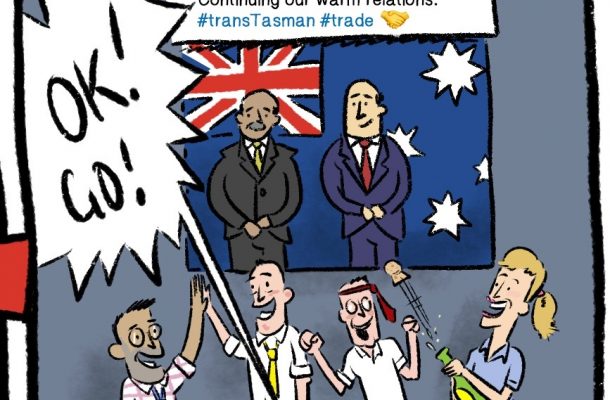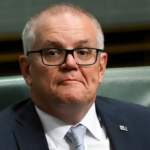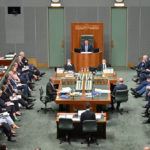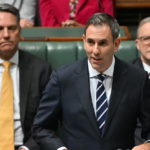Australian diplomacy goes digital

Australia’s Department of Foreign Affairs and Trade has come a long way in a short time in its embrace of digital tools and technology. DFAT, and most of our embassies around the world, now have a significant social media presence, often across several platforms.
There has been an explosion of Twitter feeds, Facebook pages, Instagram accounts, and even blogs and YouTube channels, adding colour to what was (and remains) a rather lifeless website-only presence. In this, DFAT has been helped by political leaders who have embraced these tools as a means of modern-day communication.
However, in the rush to embrace digital media, there’s a danger that some of the bigger questions have gone begging, and that ends have been confused with means. Doing digital diplomacy well not only requires having the requisite digital platforms—it entails using them strategically and effectively to advance a diplomatic agenda. This is where DFAT is struggling: it has gone digital, but it isn’t yet doing digital diplomacy.
Having a large number of social media accounts and a growing crop of followers or friends isn’t sufficient. The test of success is whether those factors are being properly utilised to bring Australian diplomacy from the analogue into the digital age.
As I explain in an ASPI International Cyber Policy Centre report released today, the challenge is to fully utilise these platforms to conduct DFAT’s core business, which is diplomacy. And here, there’s still quite some way to go. There’s not yet a wholesale recognition and appreciation of how the advocacy landscape has changed. As a result, and with a few stand-out exceptions, most of DFAT’s digital channels suffer from the same three ailments.
First, there’s too much use of new media channels to transmit old media content. Digital media are a different format; they speak to a different audience and require different—and more engaging— content. Good digital content is pithy, impactful and tailored, but too little of DFAT’s digital content meets that test. Using new media channels to transmit old media content (press releases and the like) ruins both.
Second, there’s a pronounced tendency for DFAT’s digital platforms to duck the difficult issues. There’s a place for building brand Australia, promoting tourism and spruiking soft news stories about Australia on digital platforms, but public and cultural diplomacy can’t be the sum total of our digital effort, or else we risk being (in the words of one insightful commentator) ‘all gums, no teeth’.
Tempting as it is, there’s no point in running dead or lying low when a controversial issue is unfolding. This is exactly when digital platforms come to the fore and the credibility of your digital presence is tested.
Too often, when a storm of controversy is raging all around them, DFAT’s digital channels bury their heads in the sand, go radio-silent, or promulgate the Panglossian fiction that all is well.
If Australian nationals are set to be executed in a foreign country, or there are suggestions that the Chinese are building a military base in the southwest Pacific, or if a candidate for the Philippines presidency jokes about the sexual assault and murder of an Australian missionary, then we should expect that the relevant Australian digital diplomatic platform will have something worthwhile to say about it—to articulate our views and interests on an important issue (our ambassador in Manila did—rightly—condemn this last incident at the time on social media). Likewise for major world events.
The message must obviously reflect diplomatic realities, but to say nothing in such scenarios is simply not credible. It also lacks a prized trait of the digital age—authenticity—and so diminishes the value of the platform and treats readers as fools.
DFAT needs to start treating digital diplomacy as core tradecraft, rather than optional add-on. It should provide compulsory digital training for all outgoing heads of mission and encourage healthy internal competition and innovation. It should pilot more sophisticated data analytics tools and integrate digital tools into regular diplomatic campaigns. It should develop and pilot a new stream of diplomatic reporting that’s punchier and timelier, and reaches a broader audience on hand-held devices.
DFAT should create new positions of ambassador to Silicon Valley and ambassador to the Chinese tech giants based in Beijing. It should experiment more with ‘pop-up’ diplomatic posts, pilot one-person posts and encourage innovation and experimentation in the conduct of digital diplomacy, conceiving of embassies as hubs and connectors for a broad set of interactions.
Finally, DFAT needs to adopt some of the nimbleness and agility of the tech world in how it conducts Australia’s external policy. Failure to do so means the field is left to others.
This article was published by The Strategist.
Dave Sharma is the Liberal Party candidate for the seat of Wentworth and director and principal at Kelly+Partners. He was Australia’s ambassador to Israel from 2013 to 2017 and served overseas in senior roles at Australian diplomatic missions in Washington DC and Papua New Guinea.














